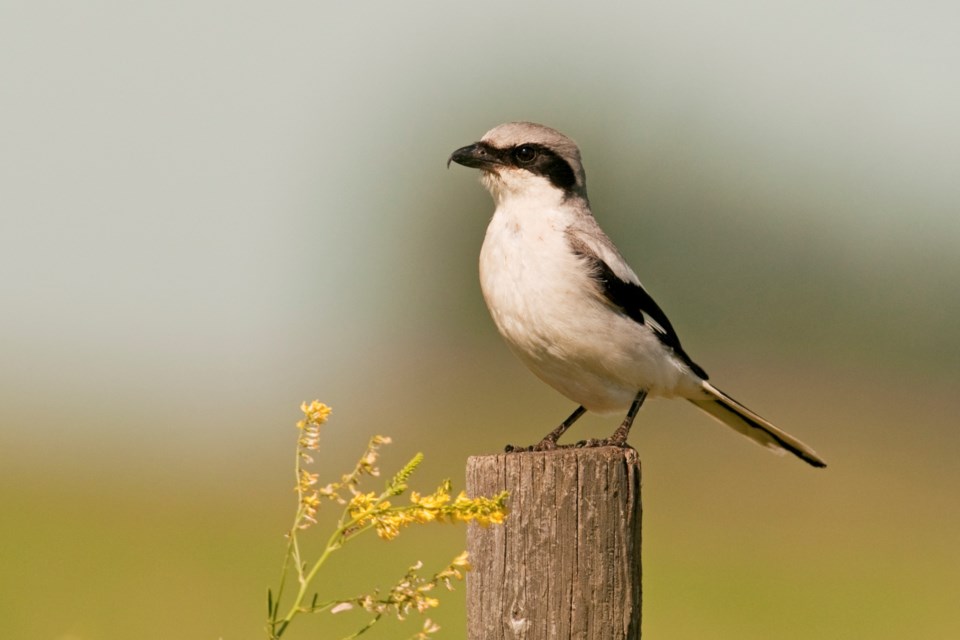“Young Loggerhead Shrikes - threatened, prairie songbirds - are going to be out over the next couple of weeks near their nests, learning to perfect their hunting and impaling skills,” says Rebecca Magnus, Habitat Stewardship Coordinator with Nature Saskatchewan. “This is probably the most fascinating time to observe shrikes as the young may be in groups of 4 to 7, clumsily hunting and impaling prey, not going too far from their nests”.
Butchers hang their meat to dry, and so too does the Loggerhead Shrike. Magnus explains, “instead of storing their meat in a meat locker as a butcher would, these birds impale and hang their prey on barbed wire fences, thorny shrubs, and trees, affording them the nickname ‘butcher bird’”. The shrike’s prey items include beetles, grasshoppers, garter snakes, mice, voles, frogs, and even other smaller songbirds. Similar to birds of prey Loggerhead Shrikes have hooked beaks; however, unlike most birds of prey, shrikes lack strong talons, and instead must impale a prey item in order to secure it during feeding.
The Loggerhead Shrike is slightly smaller than the American Robin. Shrikes have a black mask that extends from the black bill past the eyes. These birds earn the “Loggerhead” part of their name because they have relatively large heads, and the “Shrike” part of their name because they have a high-pitched shriek for an alarm call. The Loggerhead Shrike has a grey back with white underparts, and black wings and a black tail with characteristic white stripes on the wings and the edges of the tail. These traits are easily seen when shrikes are in flight.
To learn more about the Loggerhead Shrike, or if you have Loggerhead Shrikes and would be interested in an on-site visit from the Shrubs for Shrikes Habitat Stewardship Coordinator, please contact Nature Saskatchewan at 1-800-667-4668. Nature Saskatchewan is asking anyone who sees a Loggerhead Shrike to please report the sighting. By reporting Loggerhead Shrike locations, you are providing valuable information used to assess population size and distribution in order to help direct the conservation efforts for this threatened bird. Information will not be shared without permission.



.png;w=120;h=80;mode=crop)
